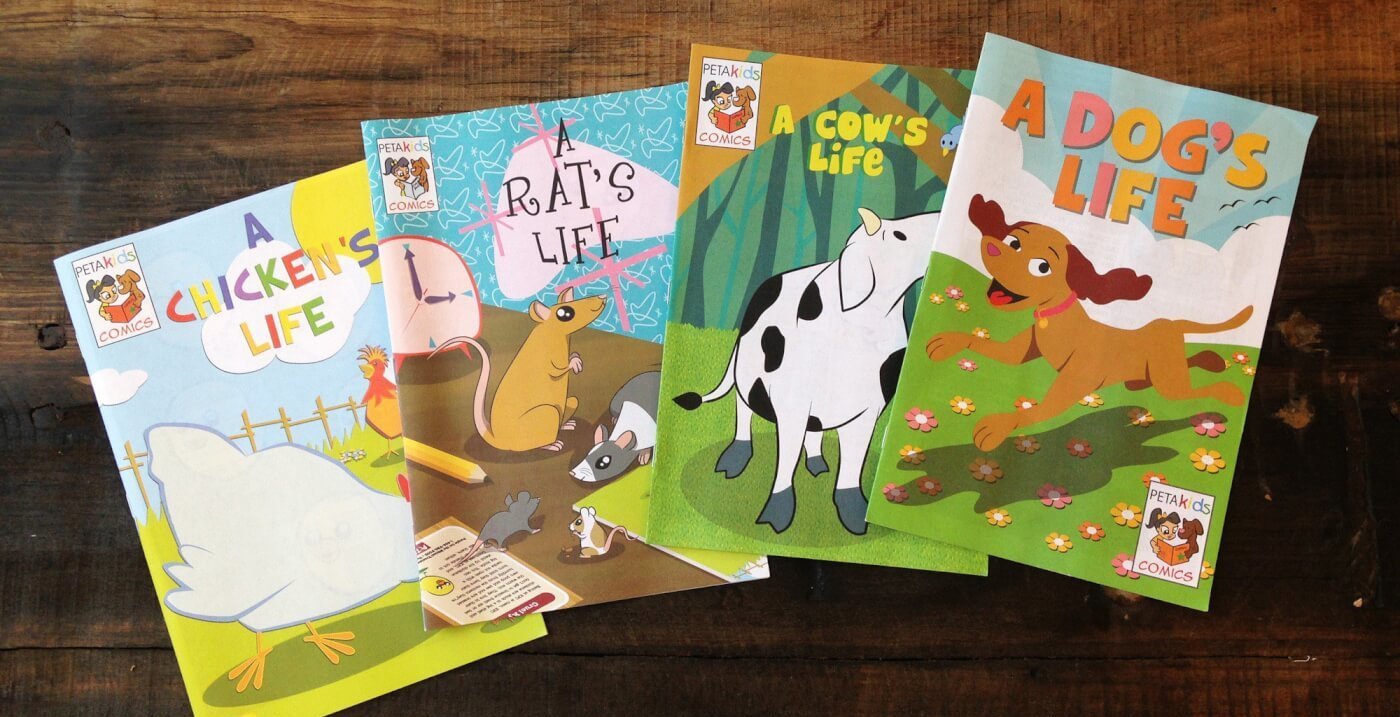TeachKind Video Series: A Guide to Promoting Empathy & Motivating Students
TeachKind offers many free resources to help teachers instill kindness in their students—here’s how your class can take advantage of them.

You may be familiar with TeachKind, PETA’s humane education division, which works with teachers and schools around the country to help them integrate compassion for animals into their curriculum.
But you may not yet know about all the free resources that TeachKind has for teachers. We offer printable classroom activities, workshops, posters, books, access to documentaries, lesson plans, and many other tools and ideas that educators all over the U.S. can easily integrate into their classrooms to make learning and practicing empathy fun and exciting for students. Our informative and easy-to-digest three-part video series explains how TeachKind can aid you in your mission to bring more kindness into your classroom.
Video 1:
Rationale

TeachKind wants to help educators encourage students to build character through compassion for animals. In this video, we cover the three main reasons for incorporating compassion for animals into the curriculum: pro-social behavior, violence prevention, and academic motivation. Issues relating to animals need to be thoughtfully included in classroom conversations—not only because doing so can fulfill state educational mandates, which is explained in more detail in the video, but also because we have the perfect opportunity to capitalize on the innate affection that children have for animals as a vehicle for encouraging character development. And we can do this without sacrificing instructional time in the classroom. Teaching kindness to animals at a young age is an effective way to combat the epidemic of youth violence and bullying. Fostering children’s empathy for animals leads to more empathic behavior toward their peers. But how can you do this in your classroom? Watch the next two videos to learn more about our free resources and get step-by-step guidance!
Video 2:
Share the World

In this video, we introduce our free empathy-building program “Share the World.” The video highlights a few of the lessons contained in it and explains how it connects to academic standards. The program includes an inspiring video accompanied by thought-provoking reading and writing activities that also address Common Core Learning Standards. This portion of our three-part video series includes a preview of the amazing footage that’s available to your students through our unique program and explains how the lessons can enhance science units on animals, social studies units on citizenship, writing skills, and more. Watch to learn how “Share the World” is organized into three main concepts so that you can make the most of it when using it with your students. And bear in mind that while there are different versions of “Share the World”—one for grades K–2 and one for grades 3–5, with teacher’s guides included for both versions—each focuses on the Golden Rule: Treat others the way you would want to be treated.
Video 3:
Intro to K–12 Resources

In this video, we present the variety of free resources that TeachKind makes available to K–12 educators—including specific examples—and delve into ways they connect to your academic objectives. This video also covers topics like what to do if an insect wanders into your classroom. Carefully taking the insect outside may seem like a small act, but it can instill respect for all animals in an impressionable child. You can also check out our age-appropriate comic books geared toward students ages 12 and under—which cover topics such as the lives of cows used for leather, dogs chained outside, and animals exploited in experiments—and see our corresponding games that bolster reading comprehension. The video covers the many debate kits that we offer, lessons on documentaries that we provide access to for free, our series on inspirational rescue stories, animal-friendly idioms, and more. Our resources can help students with key vocabulary, higher-order thinking, self- and social awareness, and so much more. Watch to learn more ways to incorporate compassion for animals into the curriculum and foster empathy in students while simultaneously meeting academic standards.
You’re already working hard on anti-bullying efforts and encouraging social and emotional growth. Teaching students how and why they should exhibit kindness to animals should be a natural component of these efforts. Bringing character education into the classroom teaches students respect for others, justice, and responsibility for themselves and others—and by tapping into the cognitive and emotional learning centers of their brains, TeachKind can help you do it in a way that will leave a lasting impression.